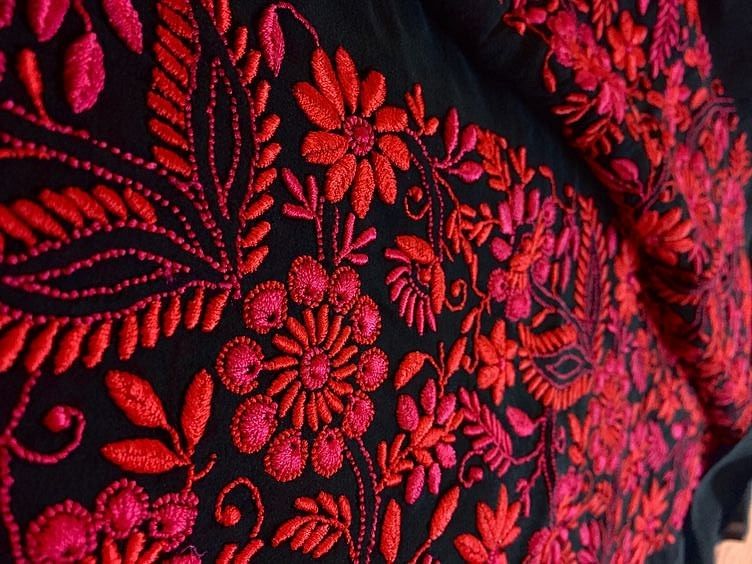
Intricate white embroidery on pastel-hued textiles — few fabrics can match the elegance of Lucknowi chikan fabrics. It has 36 different types of stitches! The art was accorded the Geographical Indication (GI) status in December 2008, which states it is native to Lucknow and its surrounding villages.
There are several theories associated with the origin and growth of this art. There are references to this embroidery in texts dating to the reign of Chandragupta Maurya by Megasthenes, a Greek traveller. Another theory states that the art has its origins in Persia, and was popularised in the country by the Mughal rulers. Noor Jahan, the wife of Emperor Jahangir, played an important role in patronising the art, which spread during his era to several cities across India. The legacy was carried on by the Nawabs of Awadh, who were responsible for bringing it to Lucknow during the 18th century.
Once the cloth is sourced and the design is finalised, it’s embossed on wooden blocks that are used for printing. “We normally source base designs from top designers in Mumbai, and then our in-house designers work on minor variations and prepare a subset of at least 100 different patterns that are printed on the base cloth,” says Rinku, who runs Sewa Chikan along with his family in Lucknow.
The rest of the manufacturing process is divided into these phases: block printing, embroidery, and washing. Wooden blocks are dipped in indigo dye and the design is embossed on the cloth, which is then sent for embroidery. Embroidery is the most complex and time-consuming part of the process.
The magical hands behind this exquisite art are those of women who reside in villages in and around Lucknow. There are close to 2.5 lakh chikan artisans in the surrounding villages of Hardoi, Sandila, Sitapur, Itaunja, Kakori, Paharpur — the main centres of this embroidery. The women trained in the art execute the orders they receive from manufacturers and wholesalers.
They put in 6-8 hours of work each day, what they set aside after finishing their household chores. Depending on the level of detailing of the patterns, it takes between five to 45 days to finish one garment. Depending on their experience, they earn from Rs 50 to Rs 150 per day.
“We normally travel to the villages and commission bulk orders in the range of 100 garments. The women distribute it amongst themselves and also pass it on to neighbouring villages. This operates word of mouth,” says Rinku. He says there is hardly anyone in the city who is interested in learning or pursuing the art.
While the industry witnessed dismal times in the 1970s with the exploitation of women and children by middlemen, 1984 saw the registration of ‘Self-employed Women’s Association’ (SEWA) in Lucknow. Along with the revival of the craft, the objective of this organisation was to eliminate middlemen so that the artisans directly interact with the manufacturers, and to ensure that they are paid appropriately, and on time.
While there is no doubt that the sheer beauty of chikan work has created a market for the garments worldwide, the craft has its challenges. “Such fabrics can be mass-produced, are cheaper, and the embroidery here is less durable. Often, customers are conned into buying them,” says Rinku. Moreover, this industry still remains unorganised, which means that the artisans are not paid justly for their efforts.